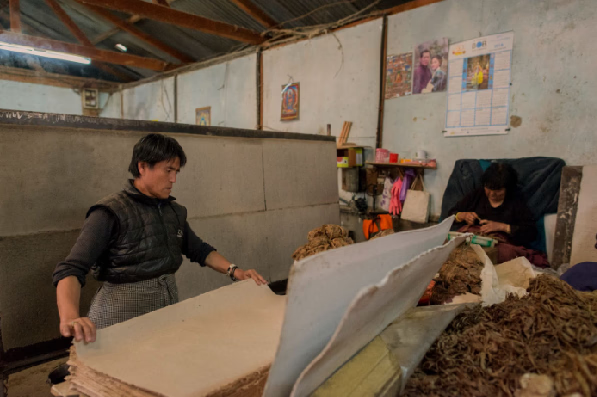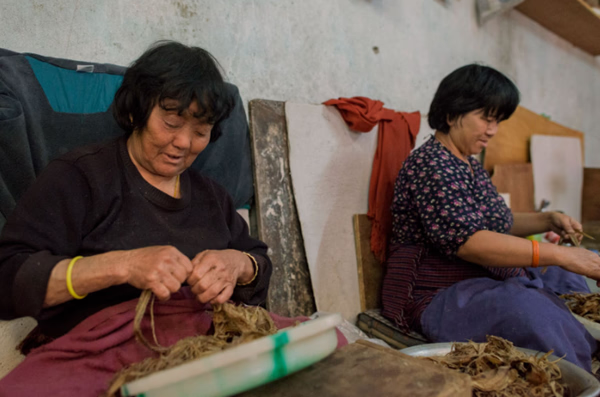Alongside Bhutan’s internationally applauded concept of Gross National Happiness, the jaw-dropping landscapes, and the plethora of Buddhist sights, the country takes distinct pride in its cultural heritage in arts and crafts. Among painting, weaving, and woodwork, paper making is one of Bhutan’s treasured traditions.

History of Jungshi Handmade Paper Factory
In 1990, the Ministry of Trade and Industry established the Jungshi Handmade Factory (Jungshi meaning natural) in Bhutan's capital Thimphu to expand the old domestic skill for commercial purposes and give the ancient art relevance in the modern world. Today, they export their products to the US, Japan, Europe, India, and Nepal.
Traditional Paper-Making Process in Bhutan

In a simple one-story building in Thimphu’s southern suburbs, rough natural fibres are extracted from the bark of two species of highland shrubs and slowly transformed into beautiful translucent sheets of paper. The factory uses the bark of the Daphne tree and Dhekap tree in the manufacture of traditional paper. Visitors can observe the entire process of producing handmade paper using ancient traditional methods that have been practised for generations.

Hands-On Experience for Visitors
You can even try your hand at this ancient craft and make some paper of your very own as a souvenir. Deh-sho paper was originally used by monasteries for woodblock and manuscript books and also for writing prayer books.
Location and Products of Jungshi Paper Factory
It is located approximately 1 km from Thimphu City. The Jungshi paper factory continues to preserve and promote this age-old Bhutanese tradition. It also produces various other products, such as stationery and greeting cards.
